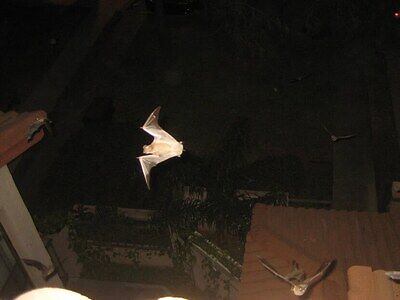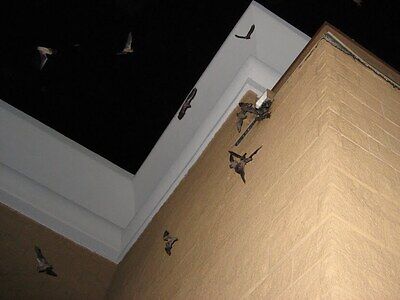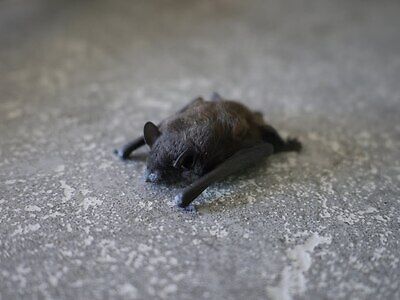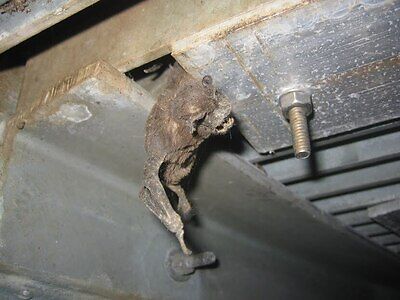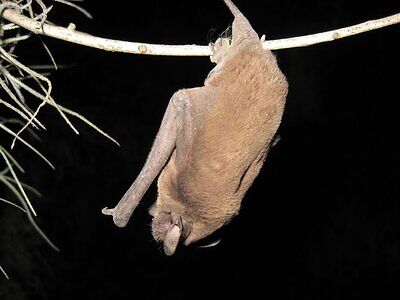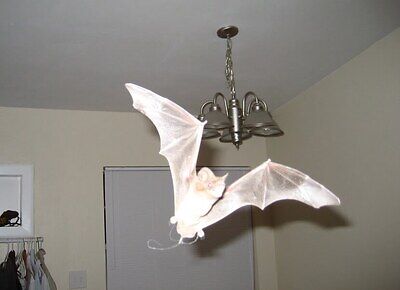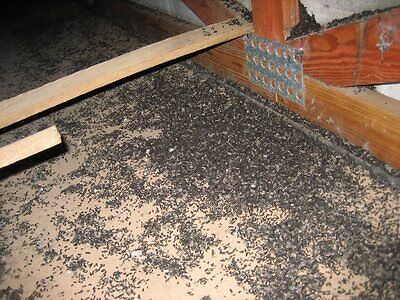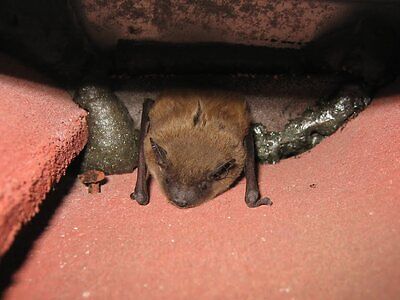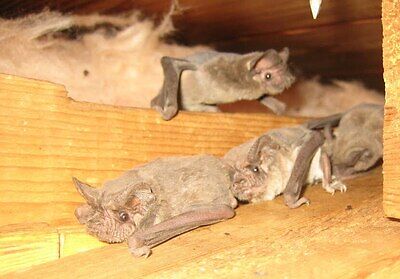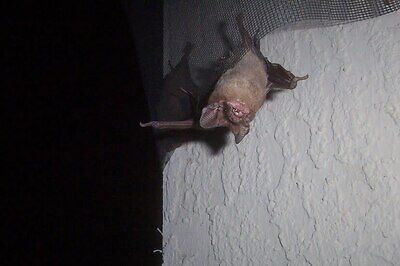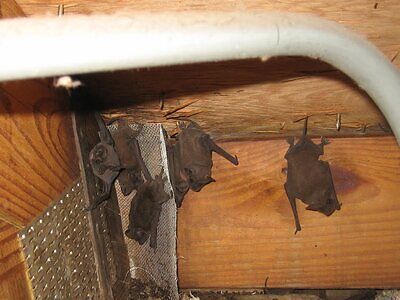Bat Trapping & Removal
Welcome to Bat Control! We are a pest control company operating in over 150 places in the USA. We specialize in the permanent removal of bats from your house or attic. Having bats overrun your property is not a situation you want to be in. Their droppings, called guano, smell terrible, and bats can make a lot of disturbing noises at night. Whenever we remove bats from your house or attic, we use humane methods and ensure that bats are PERMANENTLY kept away. Call us anytime at any of our 150+ US locations to schedule an appointment the same day or the next. Some of the services we offer include:
- 100% Permanent Bat Removal
- Full House & Attic Inspections
- Prevention and Damage Repairs
- Attic Bat Droppings Cleanup
- Poison-Free Bat Control
- Humane, Effective Bat Trapping Methods
- Dead Bat Carcass Removal
- Bat Exclusion Barrier Setup
CALL US 24/7/365
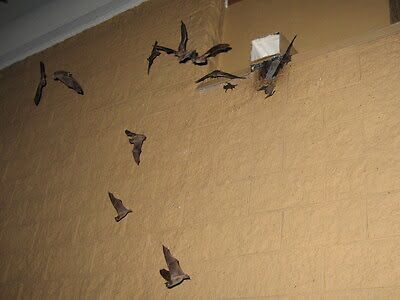 Bats are a species that has adapted quite well to the increasing urban landscape and the spreading human population, but by adapting to roosting in buildings this does sometimes bring bats into conflict with people. One of the main problems that bats can cause when they are living alongside people comes from their droppings, because as well as being unsightly it also causes a significant health hazard. Bats are also one of the main transmitters of rabies to humans in the USA, which makes it natural for people to want to get rid of bats from their building.
Bats are a species that has adapted quite well to the increasing urban landscape and the spreading human population, but by adapting to roosting in buildings this does sometimes bring bats into conflict with people. One of the main problems that bats can cause when they are living alongside people comes from their droppings, because as well as being unsightly it also causes a significant health hazard. Bats are also one of the main transmitters of rabies to humans in the USA, which makes it natural for people to want to get rid of bats from their building.
What Type Of Buildings And What Parts Of Buildings Do Bats Use To Roost
Bats can become a problem in many different types of buildings, but there are some which are more likely to offer a suitable roost for them. Bats will generally look for quite tall buildings, preferring a roost that is above ground level, and they will also prefer buildings that offer a dark, quiet and well insulated space in which to roost. Churches, large public buildings and derelict buildings will often be particularly prone to bat infestations, but most people who do come into contact with bats will do so when they have a colony in their roof space or in a barn.
When it comes to the parts of the buildings most likely to have bats roosting, roof spaces are by far the most likely to have a colony of bats present. This is because they usually offer dark spaces with very little noise and disturbance, and as they are at the top of most properties they also tend to be quite warm. However, bats are also very adaptable creatures and are also known to roost in chimneys and wall cavities, as long as the location isn't too exposed to the weather.
What You Should Know Before Carrying Out Bat Removal Work
One of the most important things to know before starting to remove bats from your building is that there are a number of state and federal laws protecting bats, so it is important to carry out the work correctly. Firstly, it is illegal to kill bats in any state, and those that are caught killing bats can suffer severe consequences, including a fine of up to $1,000 for every bat that was killed. In particularly serious cases it is also worth noting that there is also the option for punishments to include jail time.
It is also illegal to carry out any bat removal work during the bat maternity season, which generally runs from April to the end of August, although this can vary depending on the location and the species of bat involved. Female bats will generally only give birth to one baby every year, so this makes colonies particularly vulnerable if they are targeted for extermination, and those bats that do escape will often take decades to rebuild the population. There are also practical reasons not to carry out work during this period, as it is common to see the female bats having been removed from a building, with the babies remaining inside, and this can cause a major smell and health hazard once the baby bats die.
As well as the fines and punishments for carrying out work incorrectly, it is also worth noting that bat removal work can be quite hazardous. The spores within the bat droppings are known to cause Histoplasmosis within people, which can be particularly severe and cause lung problems. Although bats will very rarely bite human beings, a small percentage of the bat population does carry rabies.
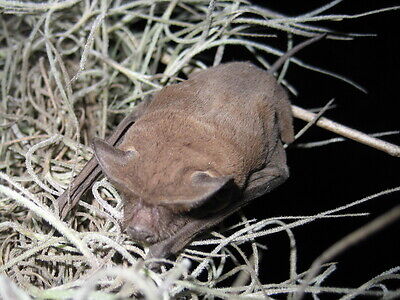
Eviction And Prevention
When it comes to dealing with a bat infestation, there are a number of different approaches that can be taken, but by far the most effective is to evict the bats from the building, and then to prevent them from returning. This method does require a reasonable amount of work and time to monitor the bats, but is far more likely to deliver a permanent solution than other methods of dealing with bat colonies.
Identifying The Bat Entry Points
The first step to actually getting rid of the bat colony in any building is to identify how they are getting in and out of their roosting area. The first step is to carry out a visual examination of the property. Bats can get in and out of a property through a hole that is a quarter of an inch in diameter, so it will often need to be a close examination to find all of the entry points. One of the first signs to look for when identifying such entry points is that the walls and floor under these entry points will often have droppings or urine stains,
When you are looking for these entry points it can often be helpful to have a good look around the property at dusk, because this is when the bats become active and come out to hunt. Typical entry points in a colony within the roof of a building can include loose or damaged tiles, gaps in the roofing material or damaged vents and soffits. Rather than flying directly into a hole, most bats will land very close to the entry point and then crawl in, which is why each entry point will generally have a small landing area next to the hole.
Depending on the location of the roost within the building, it can also help to carry out an internal examination of the area to help see where the signs of bat activity going in and out are most obvious. It is worth wearing a suitable breathing mask when going in to that part of the building, to ensure that you don't inhale any of the dangerous spores found in their droppings.
Installing Exclusion Devices And Evicting The Bats
The next step once you have identified the entry points within the building is to install the devices that will actually get rid of the bats for you. There are a number of different types of devices that can be used for this purpose. Placing a fine mesh netting fairly loosely over the entry point will allow the bat to climb down to the end of the netting to get out, but will prevent them from getting back in. There are also valve and cone devices which work in the same way, making it possible for the bats to crawl out of their roost, but preventing them from being able to get back in again.
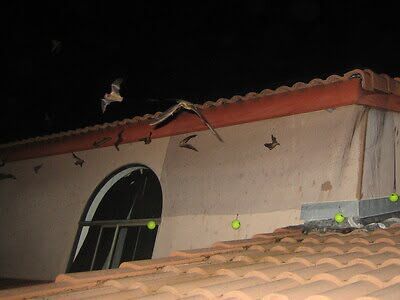 Because of the cost and the work of fitting exclusion devices, it isn't necessary to fit these devices on all of the bat entry points, as the bats will use different holes to get in and out quite regularly. Depending on the size of the roost and the number of entry points, the majority of the holes can be temporarily dealt with by fixing a wire mesh over the holes, forcing the bats to use the exit points which have the devices over them to get out. This temporary measure can then be removed and dealt with permanently once all the bats have been successfully removed from the building.
Because of the cost and the work of fitting exclusion devices, it isn't necessary to fit these devices on all of the bat entry points, as the bats will use different holes to get in and out quite regularly. Depending on the size of the roost and the number of entry points, the majority of the holes can be temporarily dealt with by fixing a wire mesh over the holes, forcing the bats to use the exit points which have the devices over them to get out. This temporary measure can then be removed and dealt with permanently once all the bats have been successfully removed from the building.
Once these devices are in place and any other holes have been sealed to prevent re-entry, the next step is to wait for the bats to go out in order to hunt. These bats will usually have to leave the roost every night to hunt, but in some cases it can take three to four days for all of the bats to be evicted successfully. You should keep monitoring the entry points at dusk, and the activity of bats leaving the roost should be significant on the first night, but should drop until there are no more bats present to leave the roost within four nights. If there are still bats leaving the roost after three or four days, you may need to examine the building again to see if there are any entry points that you may have missed that are allowing the bats back into their roost.
Decontamination And Sealing The Building
After a few days with the exclusion devices in place you should see no more bats leaving the roost, and then you can take the steps to repair the damage and to ensure that the bats can't get back in again. The first step is to clean out all of the bat droppings that will have accumulated within the roost, and this can often be a number of inches on the floor in an established colony. If there is only a small amount to deal with then it is possible to vacuum the droppings, but in most cases it will require shoveling the droppings into a container, which will then need to be sealed and taken to a safe area to dispose of.
Once the droppings have been removed, it is important that the entire roost is sprayed with an anti-fungal and anti-bacterial treatment, ensuring to spray any walls or surfaces that the bats or their droppings will have come into contact with. This will ensure that the health hazard is dealt with, killing the fungal spores and any bacteria that can cause disease. If there is any insulation material that has been contaminated by bat droppings, this will need to be replaced with clean insulation material.
The final step is to make sure that the bats can't get back in again, and this will require repairing and sealing the roost so that there is no way in to the building for the bats. If there are any broken or damaged soffits and vents then these may need to be replaced, but if the holes are quite small then it is often possible to seal these using a combination of high density foam and wire mesh. Bats are animals that will tend to return to places where they have roosted successfully, so sealing all of the holes is vital otherwise the colony may return to the building at a later date.
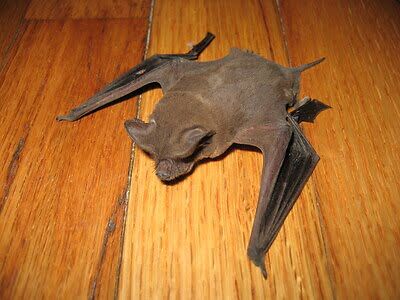
Alternative Methods Of Getting Rid Of A Bat Infestation
There are a number of other methods that people may want to try when it comes to dealing with a bat colony living in their building, but these will often be flawed or unreliable ways to solve the problem. One of the most common items that will often be on sale at hardware stores will be repellents, and these can take the form of a scent or chemical based repellent. It is also possible to buy an audio device that creates a high frequency noise which is designed to be inaudible to the human ear but can be heard by the bats. While all of these repellents do have advocates, there is little evidence to suggest that they are truly successful at evicting bats from a building.
Another option for those who are trying to deal with a bat problem is to use traps to catch the bats. Some of the traps that have been used are lethal traps, but it is worth noting that using glue traps or any other form of lethal trap to kill bats is illegal. Live capture traps can be used to catch the bats, but these can injure the bats as the wire mesh used in these traps will often be undetectable to the echolocation of the bats, meaning the bats will often fly at the walls of the trap and injure themselves.
Poison is a solution that is often used when dealing with pest animals, but it really is ineffective when trying to deal with bats, as the majority of species will only eat insects. It is also illegal to use poison to kill bats. There are also some people who will try and deal with a bat problem by fumigating the roost in order to force them to leave. While this may work with other species, fumigation is just as likely to drive bats further into the crevices around their roost as it is to drive them out, as they will often be disorientated by the fumes.
Bats In Chimneys
Although it isn't as common as finding bats in an attic or a roof cavity, bats will sometimes move into a chimney to roost. Accessing the chimney to get a good look can be quite difficult, but the principle of the exclusion work is still the same. Many people will assume that the bats will go in and out of the chimney flue, but in reality they will often find the same small holes and cracks to get in and out that they would when getting in to a roof cavity.
The most important advice is not to open the damper or light a fire until the bats are removed. They will often crawl towards the fire itself, and this can lead to people finding the bats within the living space of the property. Apart from this, the problem should be dealt with by excluding the bats and sealing any entrance and exit points. It is also worth putting a suitable cover over the chimney pot to ensure that they can't get back into the chimney itself.
The Benefits Of Having Bats In The Area
Although many people will actively want to get rid of bats from their building, bats can often be an useful species to have living nearby. This is because the majority of bats will eat insects, and this means that they will help to manage the insects that can be a greater pest. It is thought that many bats can actually consume up to 600 insects every hour, so having a colony of bats can have a significant impact on the insect population in the immediate area.
For this reason many people who are preparing to remove bats from their building will install a few bat boxes in the vicinity of the building for the bats to move into. These boxes should provide a dark and insulated location for the bats to roost, and with the bats looking for a new place to roost will often be used almost immediately when the bat removal work is being carried out. There are bat boxes that can be bought and are produced commercially, but for those who like to carry out their own work there are also plenty of bat boxes that can be made cheaply at home.
Should You Carry Out The Work Yourself?
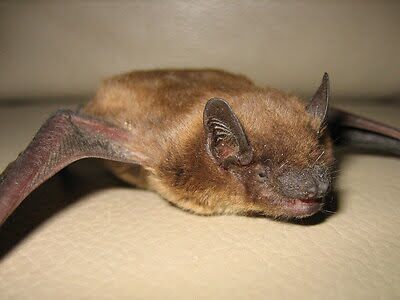 Many people will be confident that they can deal with any pest animals themselves, but it is worth noting that some of the challenges that are unique to dealing with bats do make it difficult for an amateur to carry out the work. One of the most difficult things to do is to spot all the bat entry points that they are using to get in and out of the roost, and because they are so small it will often require someone with experience to spot all of the little holes with which they are getting in and out. These individuals will often be able to provide a complete service, from surveying the roost and finding the entry points all the way through to evicting the bats and sealing the building so that they cannot get back in again.
Many people will be confident that they can deal with any pest animals themselves, but it is worth noting that some of the challenges that are unique to dealing with bats do make it difficult for an amateur to carry out the work. One of the most difficult things to do is to spot all the bat entry points that they are using to get in and out of the roost, and because they are so small it will often require someone with experience to spot all of the little holes with which they are getting in and out. These individuals will often be able to provide a complete service, from surveying the roost and finding the entry points all the way through to evicting the bats and sealing the building so that they cannot get back in again.
However, the main reason that people should consider hiring a professional to carry out the work of excluding bats from a building is the health hazards that come with this kind of work. Although it is rare, a bat bite can be very serious and bats are still the cause of the majority of cases of rabies contracted in the United States. Their droppings are also particularly hazardous, and a professional bat removal expert will have all of the required equipment to carry out the work without the risk of contracting Histoplasmosis or any of the other diseases that can be transmitted by bats.
Conclusion
Bats play a vital part in the ecosystems in many areas, and without bats the higher population of insects such as mosquitoes would be a huge problem. In many agricultural areas, bats are also a vital way of dealing with insects that can cause major damage to crops.
However, bats aren't always the best animals with which to share a home, so it is natural to want to exclude them and to remove the associated health hazard. The key thing is to carry out the work correctly to provide a permanent solution.
What Prices Do We Charge?
Learn about bat control costs and animal removal prices - each situation is different!
We operate nationwide, servicing cities such as: AL Bessemer | AL Trussville | AL Alexander City | AL Fort Payne | AL Scottsboro | AL Phenix City | AL Jasper | AL Tuscaloosa | AL Huntsville | AL Mobile | AR Fort Smith | AR Jonesboro | AR Little Rock | AZ Phoenix | AZ Tucson | CA Richmond | CA Huntington Beach | CA Lancaster | CA San Fernando | CA Thousand Oaks | CA Big Bear Lake | CA Victorville | CA San Leandro | CA Anaheim | CA Los Angeles | CA Oakland | CA Richmond | CA Riverside | CA Sacramento | CA Salinas | CA San Bernardino | CA San Diego | CA San Francisco | CA San Jose | Canada Ottawa | CO Colorado Springs | CO Denver | CT Norwich | CT Killingly | CT Middletown | CT Meriden | CT Windham County | CT New Haven | DC Washington DC | FL Ocala | FL Spring Hill | FL Ormond Beach | FL New Port Richey | FL Miami Gardens | FL Bartow | FL Pembroke Pines | FL Naples | FL Sanford | FL Jacksonville | FL Homestead | FL Miami | GA Canton | GA Augusta | GA Jasper | GA Roswell | GA Forest Park | GA Rome | GA Atlanta | IA Muscatine | IL Galesburg | IL Evanston | IL Lockport | IL Waukegan | IL St. Charles | IL Bolingbrook | IL Lake County | IL Glenview | IL Orland Park | IN Greenwood | IN Avon | IN Kokomo | IN Terre Haute | IN Greenwood | IN Hammond | KS Salina | KY Louisville | LA Zachary | LA Houma | LA Slidell | LA Franklinton | LA Covington | LA Hammond | LA New Orleans | MA Greenfield | MA Westfield | MA Amherst | MA Cape Cod | MD Annapolis | MD Queen Annes County | MD Bowie | MD Reisterstown | MD Annapolis | MD Columbia | MD Baltimore | MI Jackson | MI Howell | MI Niles | MI Shiawassee County | MI Saint Clair County | MI Flint | MI Genesee County | MI Waterford | MI Grand Blanc | MI Charlotte | MI Grand Rapids | MI Ann Arbor | MI Oakland County | MN Coon Rapids | MN Plymouth | MO Lee's Summit | MO Columbia | MO St. Louis | MO Saint Louis | MS Tupelo | MS Woodville | MT Great Falls | MT Billings | NC Indian Trail | NC Apex | NC New Bern | NC Concord | NC Wilmington | NJ Bridgewater Township | NJ Dover | NJ Princeton | NJ Somerville | NJ Stafford Township | NV Henderson | NY Glen Cove | NY Huntington | NY Saugerties | NY Kingston | NY Bristol | NY Albany | NY Watertown | NY Utica | NY Orange County | NY Geneva | NY Brooklyn | NY Newburgh | OH Middletown | OH Upper Arlington | OH Ashland | OH Mansfield | OH Bowling Green | OH Warren | OH Dayton | OH Wooster | OH Marion | OH Delaware | OH Columbus | OK Muskogee | OK Oklahoma City | OK Ardmore | OK Tulsa | OK Bartlesville | OR Dallas | OR Eugene | OR Ashland | PA Levittown | PA Cranberry Township | SC Beaufort County | SC Hilton Head | SC Easley | TN Smyrna | TN Danville | TN Knoxville | TN Jackson | TX Hillsboro | TX Roanoke | TX Corsicana | TX Paris | TX La Grange | TX Houston | TX Huntsville | TX Baytown | TX Temple | TX Kaufman | TX Graham | TX Decatur | TX Dallas | TX Fort Bend County | TX Victoria | TX Odessa | TX Abilene | TX Sherman | TX Greenville | TX Weatherford | TX Montrose | TX Round Rock | TX Cedar Park | TX San Antonio | VA Woodbridge | VA Williamsburg | VA Petersburg | VA Virginia Beach | VA Harrisonburg and Staunton | VA Suffolk | VT Burlington | WA Seattle | WA Everett | WI Racine | WV Wheeling
We look forward to hearing from you and helping you with your bat control problem!

